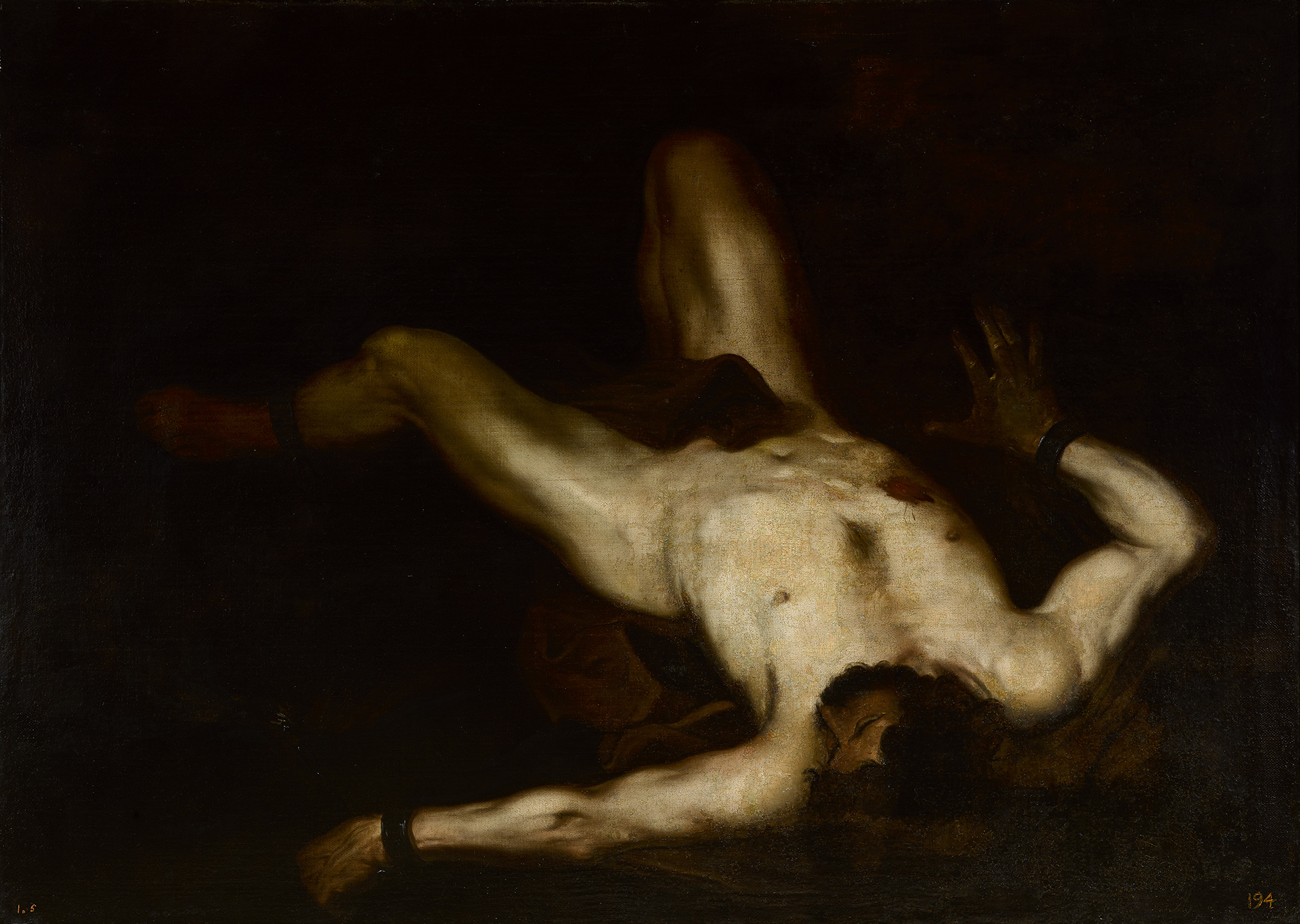In the same collection of the Ducal House of Medinaceli in Seville, exhibited in the Pacheco Hall of the Casa de Pilatos, is a painting by Prometheus in chainsAlthough it is covered with a varnish yellowed by age and dust, making it difficult to read correctly, it is another remarkable unpublished painting by Luca Giordano, whose original provenance is not known at present and which, in any case, is not mentioned in the 1693 inventory of the Neapolitan painter's paintings that formed part of the collection of the IX Count of Santisteban which was subsequently transferred from Naples to Madrid.
The solutions adopted here by the Neapolitan painter seem to refer to the inverted arrangement of the figure of Prometheus, the vigorous naturalistic representation of the anatomical details and somatic features, and the strong contrasts of chiaroscuro determined above all by the violence with which the light separates the chest and arms in the foreground from the darkness of the background, it seems that we are dealing here with an early work by Giordano, when, between 1652 and 1655 or later, immediately after 1660 and probably at the request of his patrons, he took up, sometimes with a few variations, certain models by Caravaggio in Naples and by Ribera in the 1630s. In particular, the most immediate reference seems to be that of the various series with The Giantswhich the latter painted on different occasions and for different patrons in that decade, and of which we know the Ixion and the Ticioboth signed and dated 1632, in the Museo del Prado, on Prometheus signed, which belonged to the collection of Barbara Piasecka Johnson in Monte Carlo (now in a private Neapolitan collection) and the four copies, also in the Prado, with Tantalus, Ixion, Sisyphus y Ticio derived from originals by Ribera himself that have been lost. These paintings by the Spanish master were probably based on his knowledge of the well-known examples of the same subject by Titian and Guido Reni.
However, Luca Giordano's Prometheus in the House of Medinaceli, while undoubtedly also referring to models by Ribera himself and Titian's predecessors with whom the Neapolitan painter may also have been somewhat familiar, possesses qualities of warm chromatic expanses and rampant light that contrast with the dense shadows in the background, which are, despite the alterations caused by the oxidised varnish, very different from those found in the young Neapolitan painter's early production, still clearly derived from naturalistic examples of Caravaggiesque or Riberesque inspiration. This is also evident in other paintings that Giordano produced in his later years or during his long stay in Spain, when he illustrated - this is the case, among others, of the Apollo and Marsyas of the Monastery of San Lorenzo del Escorial - scenes taken from the ancient myth, using, as he had already done in the mid-1950s and again, but more briefly, in the early 1960s, models known to Ribera himself.
Thus, pending a forthcoming cleaning operation on Prometheus that will restore the painting to its original chromatic qualities, it seems for the moment to indicate a date around 1670, due to the apparent affinities with other Jordanian compositions of those years, when it seems more likely to date the Job in the dunghill of the sacristy of the Monastery of San Lorenzo del Escorial.
Nicola Spinosa, April 2010


